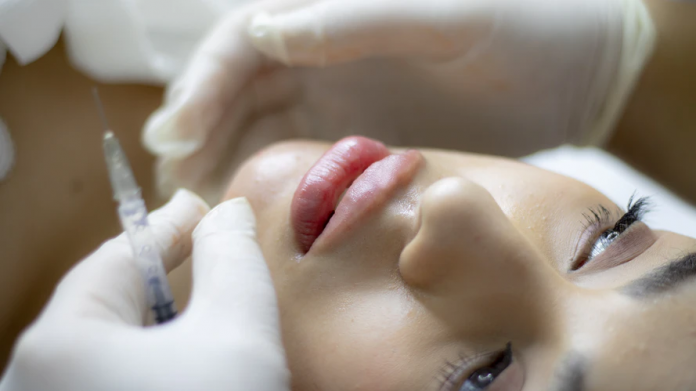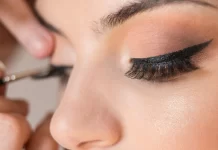Skin aging is not new for most of us as everyone transitions to an older age. Signs of aging like fine lines and wrinkles may appear in the 20s and without proper precautionary measures, this can progress to deeper wrinkles and eventually resulting in collagen breakdown, contraction of facial muscles, and facial volume loss. When it comes to the matter of skin aging, there is nothing wrong with the idea of resorting to either surgical or non-surgical methods of cosmetic procedures. And with that being said, here are all the things you need to know about the best types of dermal fillers.
The Science Behind Dermal Fillers
Basically, Dermal Fillers are gel-like substances that are injected under one’s skin to address some specific concerns like under-eye circles, lip volumizing, rejuvenation of the hands, as well as the lifting of the cheekbones.
Cosmetic fillers are composed of both synthetic and naturally occurring materials. Hyaluronic acid, a naturally occurring substance that is present in human skin, is considered one of the most common substances used in derma fillers.
This compound is a sterile, non-pyrogenic, viscoelastic, colorless, and biodegradable substance that can last more than six months until it is gradually absorbed by the body. It has hydration properties while capable of maintaining structure, elasticity, and volume which provides the subsequent effect for a specific period of time.
It is considered the best alternative for various facial cosmetic surgeries like rhinoplasty, facelifts, and the like. Injectables are also used for lip modification and facial contouring. Its benefits can be immediately observed right after the person undergoes this non-surgical procedure.
Fine lines, wrinkles, and sagging skin can immediately be reduced as fillers are capable of restoring the skin volume and provide a fresh, natural look through the hydration of tissues, significantly reducing the most common signs of aging.
Depending on the type of filler, it generally lasts between 12 to 24 months. The filler’s reversibility is widely admired by people that prefer temporary results of augmentation and rejuvenation as these products can be waited out until dissolve in the body or by injecting an enzyme (hyaluronidase) in the area which speeds up the breaking down process.
Other dermal fillers include calcium hydroxylapatite (CaHA), polymethyl methacrylate (PMMA), and poly-L-lactic acid (PLLA). These fillers have unique uses and also have their corresponding advantages and disadvantages.
Different Categories Of Dermal Fillers
Hyaluronic Acid
It is considered the most popular dermal filler available in the market. Hyaluronic acid is naturally produced by the body and is highly concentrated in some specific parts like the skin, eye sockets, and joints. It’s main purpose is to increase moisture, retain collagen, and provide skin elasticity.
Hyaluronic acid fillers bring back your youthful appearance by filling out fine lines and wrinkles and replacing the lost facial volume. Research suggests that the additional firmness and support it brings is due to the repeated injections of the substance that effectively stimulate the production of collagen in the body. Relatively, it lasts for a shorter period of several months to a year.
Calcium hydroxylapatite (CaHA)
It is a naturally occurring substance that is found in human bones. The heaviest of all dermal fillers, calcium hydroxylapatite is a mineral-like compound that is thicker than hyaluronic acids.
The American Board of Cosmetic Surgery claims that calcium hydroxylapatite helps stimulate natural collagen production in the human body and is usually used for deeper fine lines and age wrinkles.
Poly-L-lactic Acid (PLLA)
Before it was used as a dermal filler, this biodegradable, biocompatible, synthetic substance was first used for years in many medical devices like dissolvable stitches. Poly-L-lactic Acid is classified as a stimulant for collagen as it acts to rebuild natural collagen and effectively smoothing out wrinkles and fine lines. This type of filler may last for more than 2 years.
Polymethyl methacrylate (PMMA)
It was originally used in permanent surgical implants for the last century. However, when used as a dermal filler, this synthetic, biocompatible substance takes the form of tiny balls (microsphere) that remain under the skin of the patient, providing support. PMMA contains collagen to add additional firmness and structure.
These fillers are commonly used for pitted scars, lip alterations, medium to deep fine lines, and wrinkles, as well as for the nasolabial folds (lines on either both sides of the mouth that extends from the outer corner of the mouth and edge of the nose).
However, unlike the other types of fillers, PMMA fillers need to be injected multiple times to create volume and may take you roughly three months before the optimum results appear.
As you can observe, there are different dermal filler products out on the market. For you to be able to know what suits your unique needs, you can set an appointment with NuWays MD and discuss more of the options you have. With their state-of-the-art facility and competent professionals, NuWays MD offers you their expertise in different cosmetic procedures other than dermal fillers, taking you one step closer to becoming the better version of yourself.
Expert’s Top Two Picks: Juvéderm vs Restylane
Restylane and Juvéderm are different variations of dermal fillers that both contain hyaluronic acid. It is known to have “plumping” properties that are very useful against wrinkles and are used to combat different signs of skin aging.
The effects of these noninvasive procedures are noticeable, which last for several months. However, there are slight variations between the two.
Juvéderm has an instant initial result which lasts about 12 months while Restylane takes a few days to take effect and lasts around 10 months. Significantly, the effects of the Juvéderm last longer than the effects of Restylane.
However, both of these options require you to have follow-up injections in order to have maintained results.
Which Dermal Filler is Right For You?
Choosing which filler, as well as the right technique for specific locations on your face, can be very difficult. Deciding on the appropriate type of dermal fillers needs the full guidance of a licensed and credible dermatologist or cosmetic surgeon that has a well-established understanding of facial anatomy, as well as familiarity with the availability of fillers and their corresponding injection techniques. Additionally, the practitioner must be able to evaluate the area that concerns you and from there, administer the suitable procedure that would do the job.
In this manner, you would be able to minimize health risks while achieving optimal results from the procedure that you wish to undergo. If you’ve already done it before, you might want to ask your dermatologist for new product innovations that may or may not be better than what you had before.



















